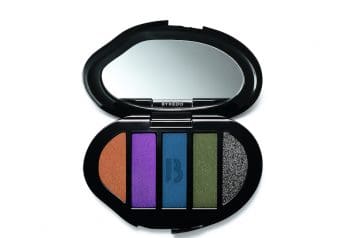Ashley Boustany co-authored this article.
Dr. Samuel Lin is a double board-certified Plastic Surgeon and Associate Professor of Surgery at Harvard Medical School who practices in Boston, Massachusetts. Dr. Lin received his Bachelor’s degree in Biomedical Engineering at Northwestern University and was enrolled in the Honors Program for Medical Education at Northwestern University, Feinberg School of Medicine, Chicago, Illinois. Dr. Lin completed a one-year fellowship appointment in Microvascular Reconstructive Surgery at the world-renowned University of Texas M.D. Anderson Cancer Center in Houston, Texas. He has also been named a Top Influencer in #PlasticSurgery. Dr. Lin is board certified by both the American Board of Plastic Surgery and the American Board of Otolaryngology-Head and Neck Surgery. Dr. Lin is board certified by two ABMS boards. He is Program Director of the BIDMC-Harvard Plastic and Reconstructive Surgery residency, and Co-Director of the Harvard Aesthetic and Reconstructive Plastic Surgery Fellowship at BIDMC. Dr. Lin was awarded the recipient of a “Mentoring Award,” by Harvard Medical School through a special nomination process which is sent out to all Harvard faculty members, house officers, fellows, and students. He has been a Boston “Top Doc” for several years in plastic surgery. Haute Beauty Expert Dr. Lin explains the option of choosing fillers or a facelift procedure emphasizing what to take into consideration and the outcome of each.
 Photo Credit: ShutterstockAcross the globe, the popularity of non-surgical facial rejuvenation procedures has taken the internet by storm. The dramatic before and after photos of young beautiful patients are boasted throughout social media platforms. Yet, the underlying question should be addressed, are fillers the solution for everyone or would some patients benefit more from taking the dive into a surgical facelift? An honest discussion of expectations and patient selection is everything in plastic surgery.
Photo Credit: ShutterstockAcross the globe, the popularity of non-surgical facial rejuvenation procedures has taken the internet by storm. The dramatic before and after photos of young beautiful patients are boasted throughout social media platforms. Yet, the underlying question should be addressed, are fillers the solution for everyone or would some patients benefit more from taking the dive into a surgical facelift? An honest discussion of expectations and patient selection is everything in plastic surgery.
FDA-approved injectable fillers vary by their composition and may be injected into different areas of the face for specific purposes. In general, they are intended to fill areas of volume loss that occurs naturally as we age. This includes the nasolabial folds, lips, marionette lines, or cheeks. Fillers may also be used to shape and sculpt the face. For example, they can make one’s face more triangular in appearance rather than square when injected in the cheekbone area. They can create fuller, more defined lips, and may camouflage deep wrinkles. However, they do not necessarily “lift” the face to correct hanging jowls or redistribute sagging skin. The results are primarily temporary but some report longer-lasting results. Younger patients who want to fine-tune their appearance or older patients who aren’t interested in surgery are good candidates for fillers. The results are immediate without a long recovery, and with proper technique, they are safe with significant aesthetic improvements.
 Photo Credit: ShutterstockAs we approach our late 40’s, the skin loses elasticity, collagen decreases, and overall dermal thickness decreases by about 6% each decade. The soft tissue and bony volume decreases and supporting ligaments become stretched. In combination with gravity, these changes lead to loose skin, wrinkles, and changes in face shape. In order to remove this extra skin and re-sculpt the lost contours, surgery becomes the most effective solution. Non-surgical treatments with skin optimization can delay the onset of the visible signs of aging, but eventually, gravity wins. A surgical facelift and neck lift provide more predictable and dramatic results in the appropriate patient. It can make one appear decades younger in one sitting. However, there is a recovery period involved as swelling resolves and incisions heal. There are scars present, but if done properly, they can be made incredibly inconspicuous. Some facelifts are combined with the injection of fat into areas of volume loss, which is essentially a permanent filler. Often times, a facelift can provide a more natural rejuvenation rather than risking the appearance of an ‘over-filled’ face. It is important to discuss the pros and cons of each treatment plan with your plastic surgeon to determine what can be done to achieve your personal short- and long-term goals.
Photo Credit: ShutterstockAs we approach our late 40’s, the skin loses elasticity, collagen decreases, and overall dermal thickness decreases by about 6% each decade. The soft tissue and bony volume decreases and supporting ligaments become stretched. In combination with gravity, these changes lead to loose skin, wrinkles, and changes in face shape. In order to remove this extra skin and re-sculpt the lost contours, surgery becomes the most effective solution. Non-surgical treatments with skin optimization can delay the onset of the visible signs of aging, but eventually, gravity wins. A surgical facelift and neck lift provide more predictable and dramatic results in the appropriate patient. It can make one appear decades younger in one sitting. However, there is a recovery period involved as swelling resolves and incisions heal. There are scars present, but if done properly, they can be made incredibly inconspicuous. Some facelifts are combined with the injection of fat into areas of volume loss, which is essentially a permanent filler. Often times, a facelift can provide a more natural rejuvenation rather than risking the appearance of an ‘over-filled’ face. It is important to discuss the pros and cons of each treatment plan with your plastic surgeon to determine what can be done to achieve your personal short- and long-term goals.
As a general rule of thumb, fillers fill, and facelifts lift.
For more information, visit Dr. Brian A. Levine's social media:

























